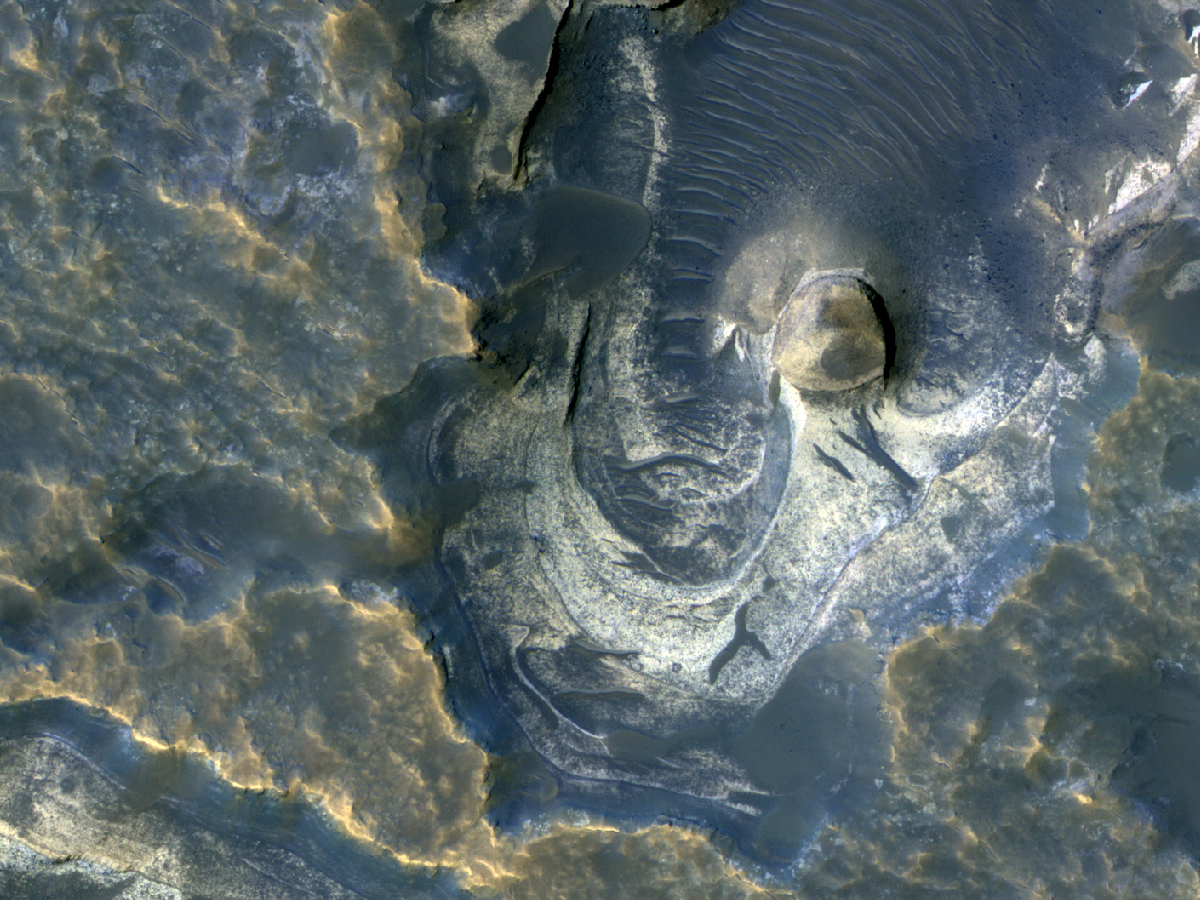Topography

Pale gold satin sand
June 26, 2013
South polar dunes
July 8, 2013 A piece of Mars: Topography makes for great landscapes. It also funnels winds, forcing dunes and ripples along particular pathways. Here a cliff (high ground is yellow) has forced low-lying, dark ripples to migrate up a slope at the end of a box canyon. (ESP_032069_1525, NASA/JPL/University of Arizona)
A piece of Mars: Topography makes for great landscapes. It also funnels winds, forcing dunes and ripples along particular pathways. Here a cliff (high ground is yellow) has forced low-lying, dark ripples to migrate up a slope at the end of a box canyon. (ESP_032069_1525, NASA/JPL/University of Arizona)




5 Comments
In sharing this photograph, I had a friend ask if the colors are enhanced in any way. Is this how Mars topography would look, were we to see it with our own eyes? (And thanks for the great photo share!)
It’s enhanced a bit. In many of my images the blue is stretched quite a bit (just the way the camera works, I’d have to work harder to get rid of that effect). The surface of Mars is mainly oranges, tans, and grays. So the blue should be more gray and the rest of it should be a little more yellow/orangey. The HiRISE team tends to stretch images so that the grays are more cyan. That’s pretty typical for remote sensing of the planets and night sky (you don’t really see spectacular pinks and greens when you look at nebulae through a telescope). I do it because it makes a pretty picture and because it makes the scene easier to interpret.
Thanks for much for this information! My fellow space geeks and I appreciate it. Visual perception is space objects is fascinating.
If I didn’t know it looks like water & land like the Coastline an ocean. Dave 🙂
I was actually thinking the same thing.